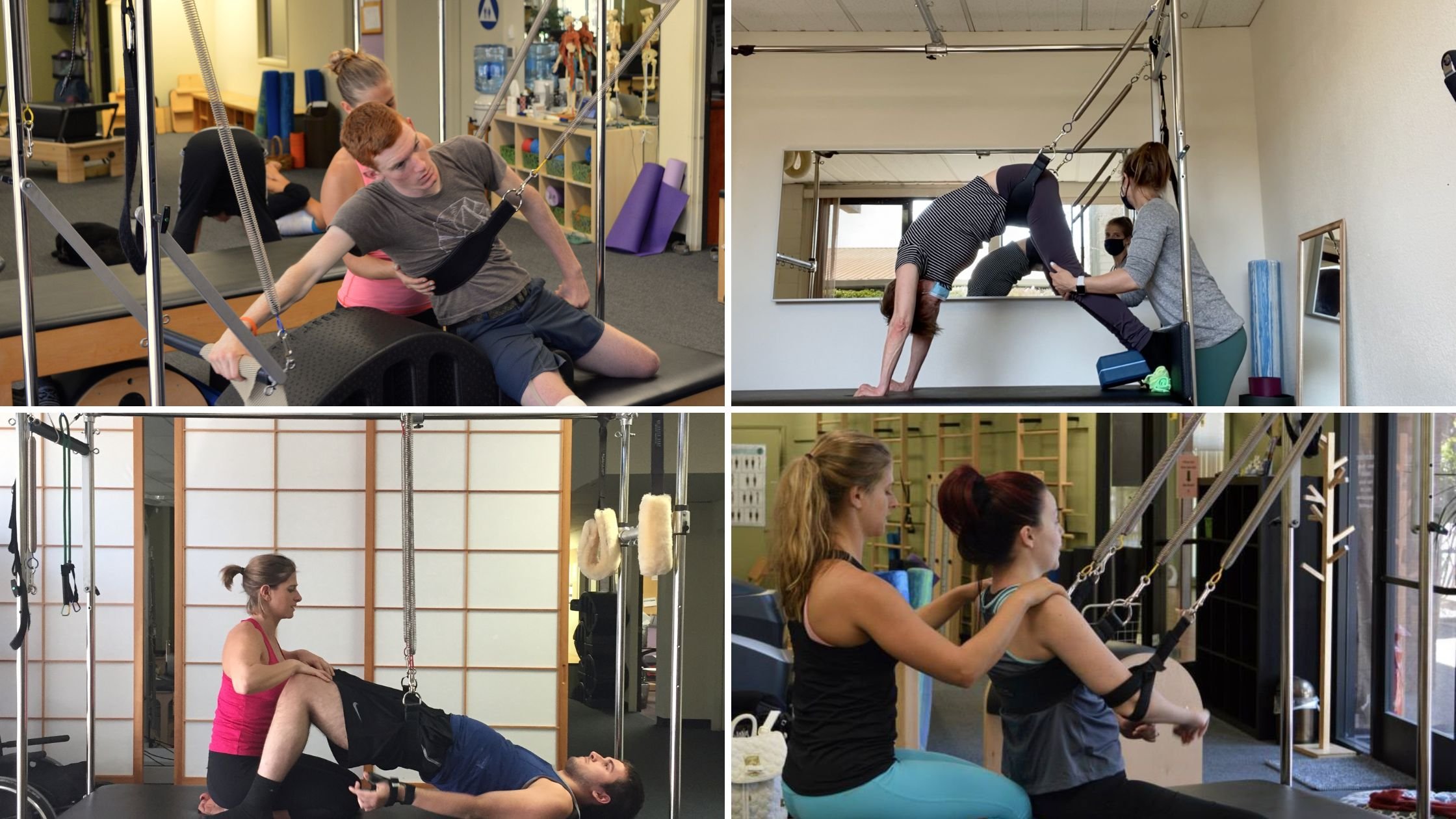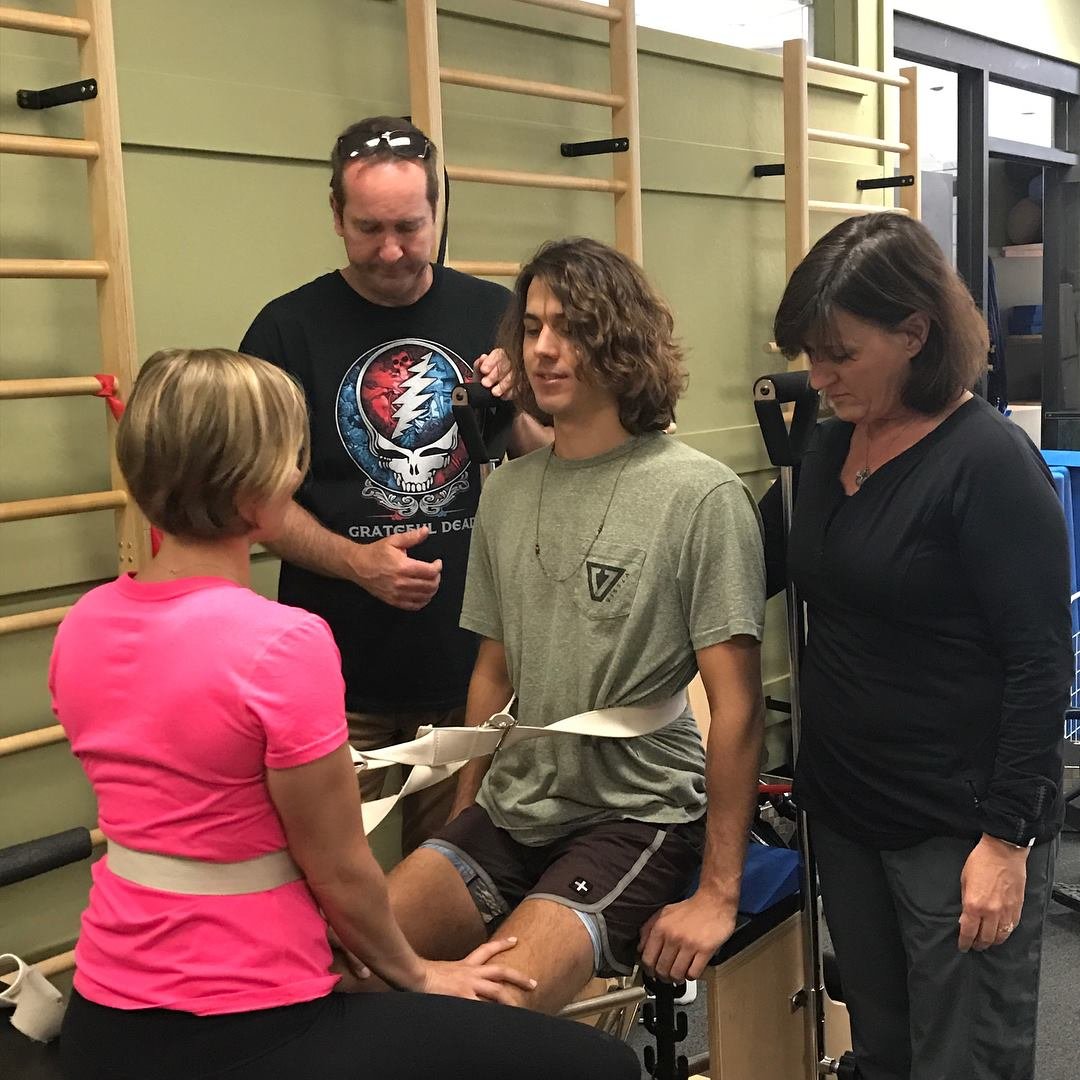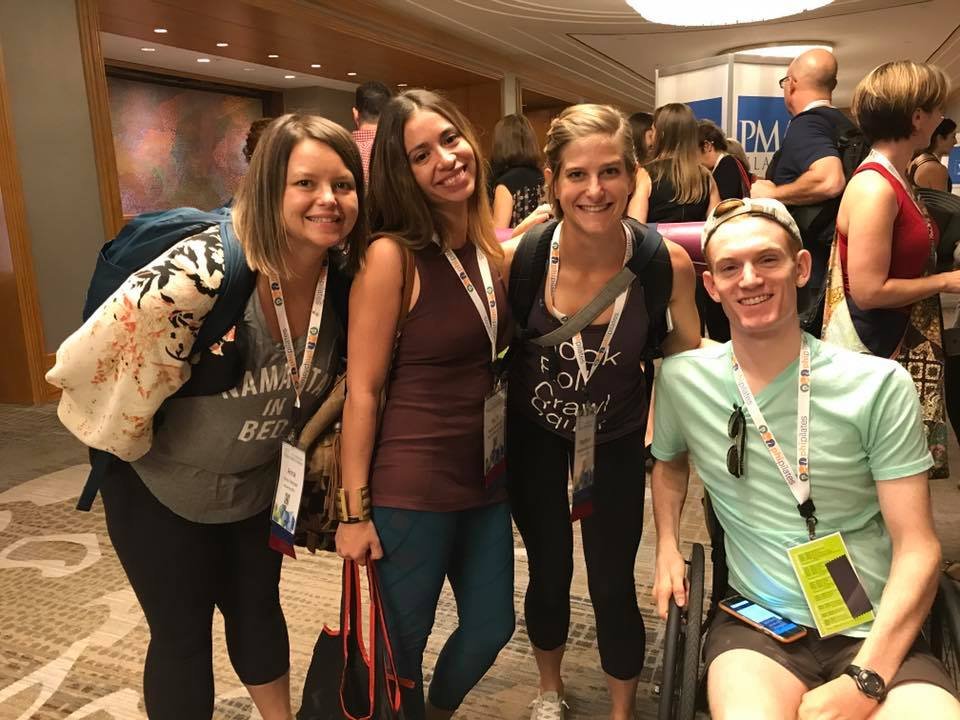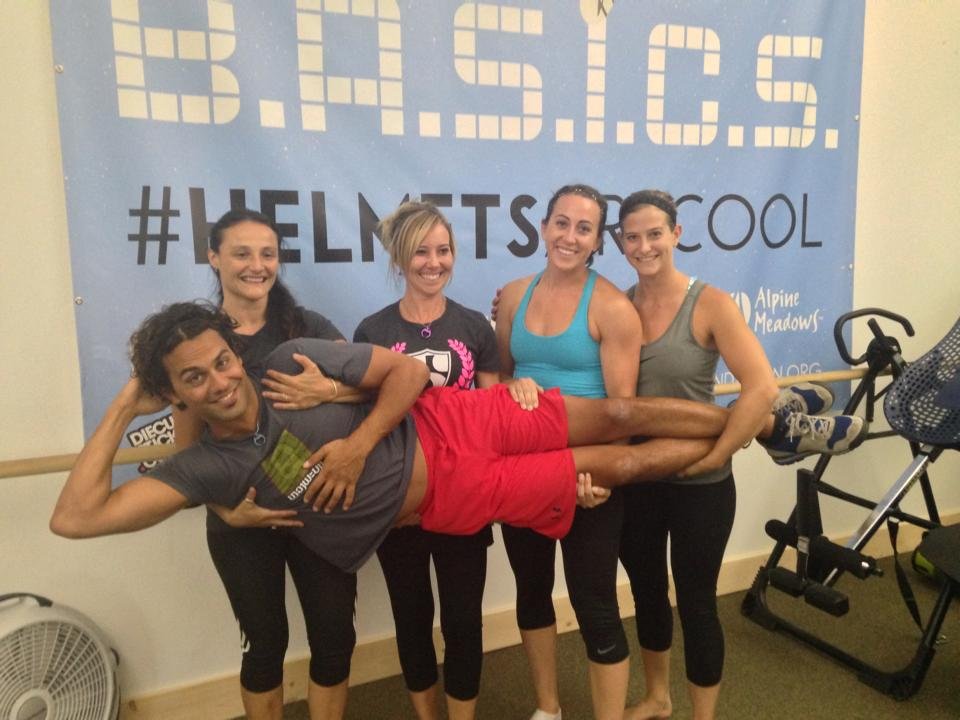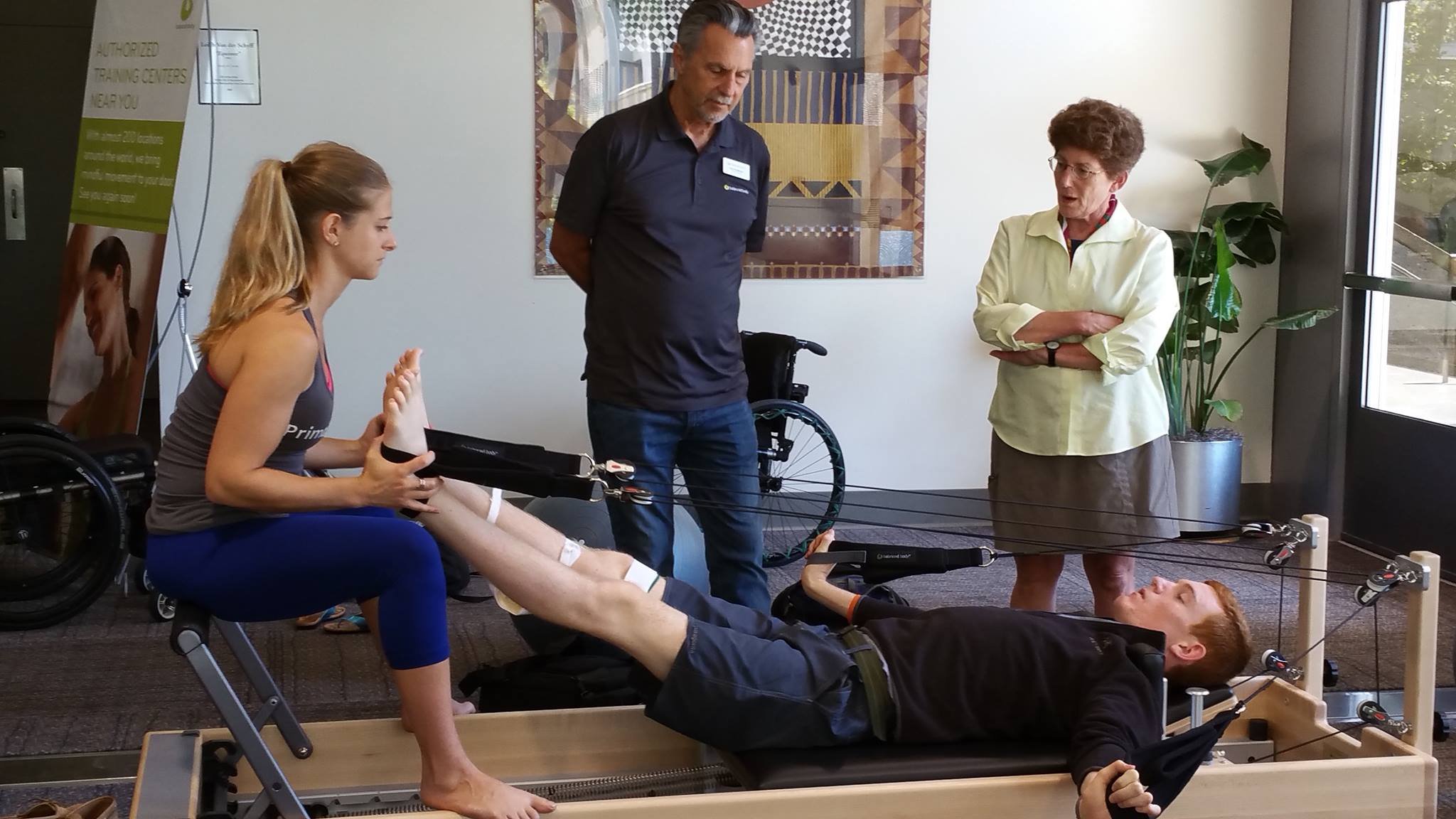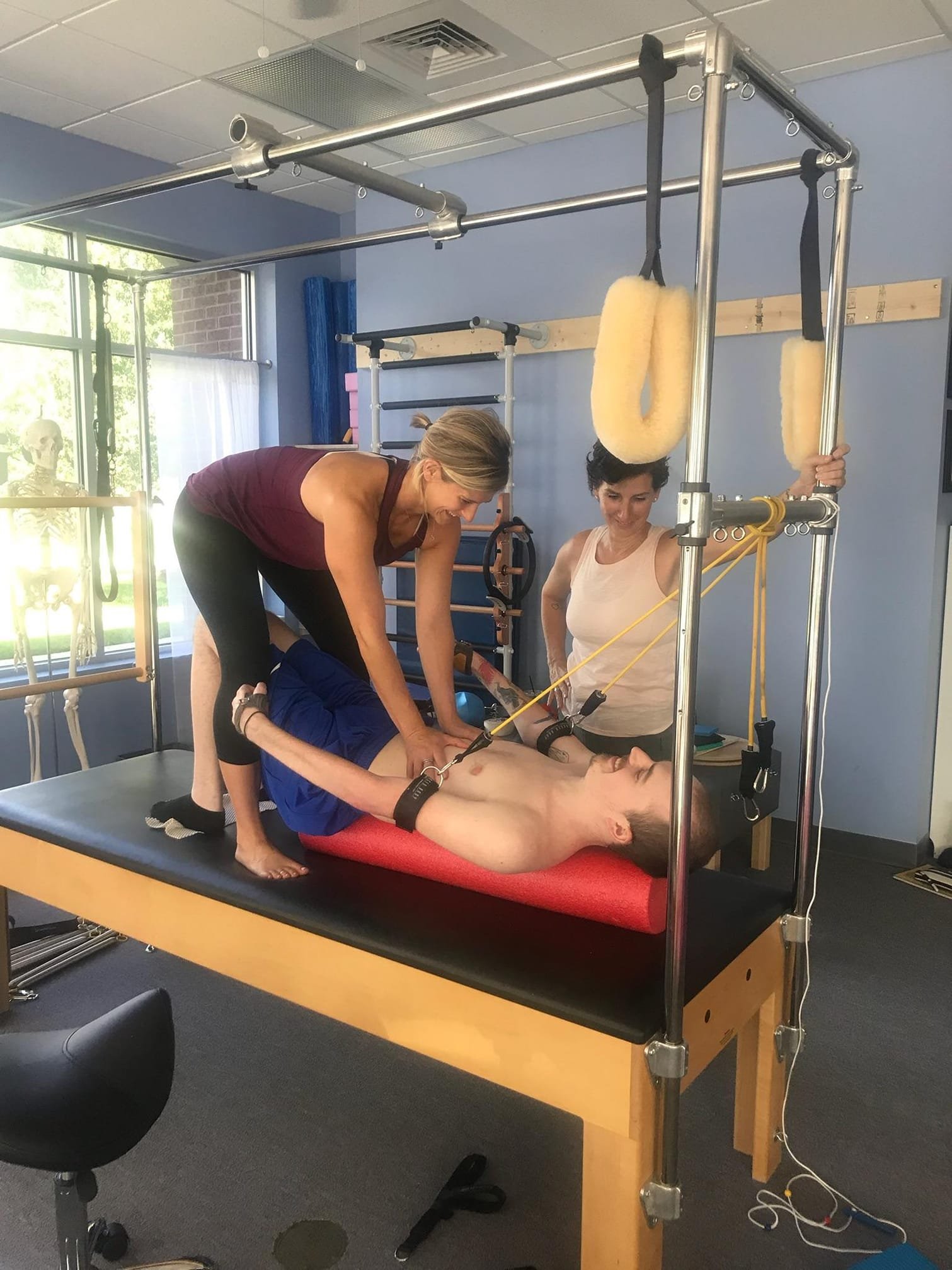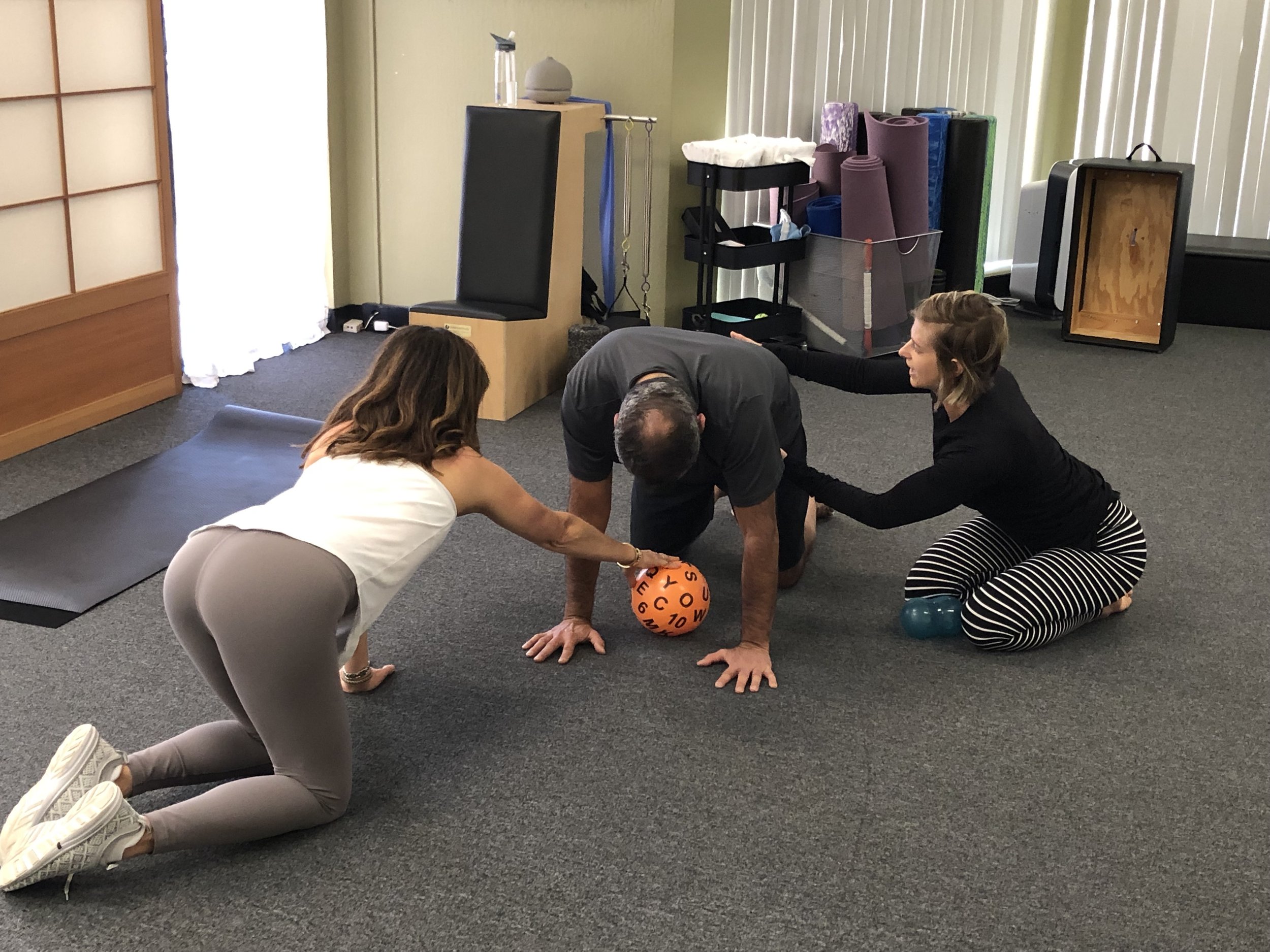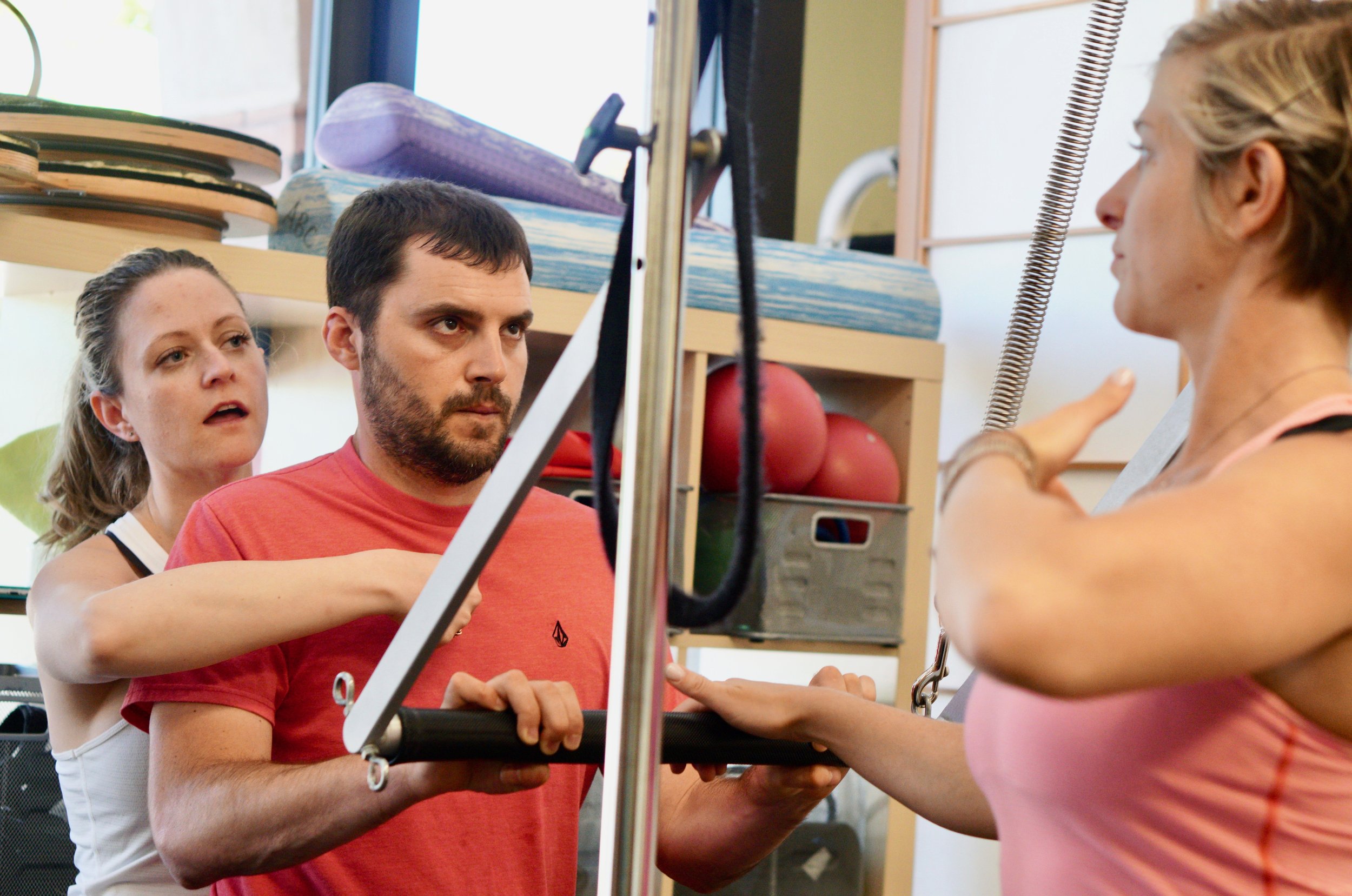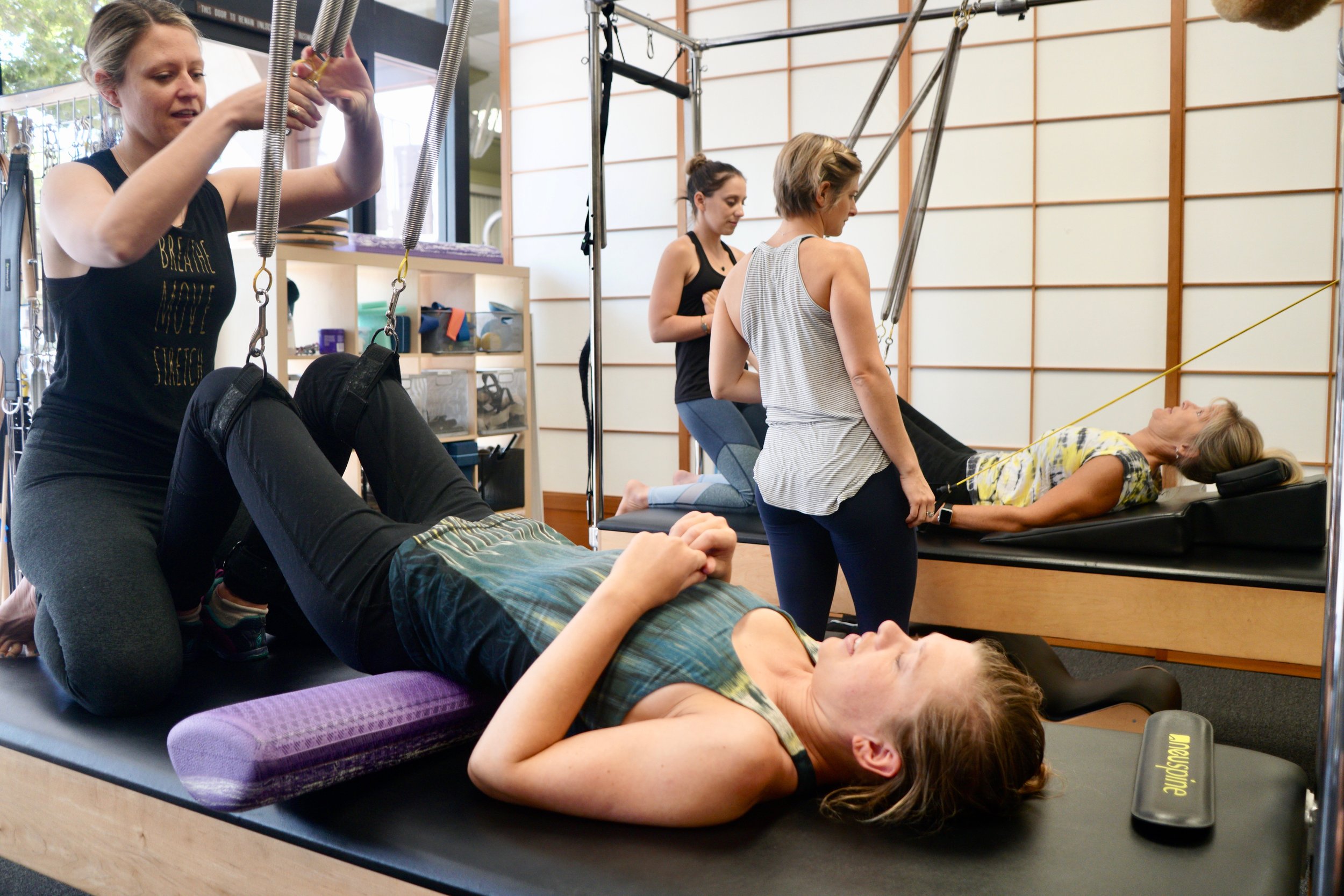3 ways to Create a Sustainable Career as an SCI Recovery Specialist
I received this question in my inbox the other day and my mind immediately went back to the early days when I was just starting out in this field:
Believe it or not, my first six months as a spinal cord injury recovery specialist did not go well: after just a few weeks of training, I was “thrown to the wolves” and started working one-on-one with clients. I was a slow learner (and there was so much to learn!) and clients quickly lost patience. I felt so lost in what I was doing and so frustrated that I couldn’t perform that I almost quit. I barely made it through my probational period (also found out later that I was close to being fired)!
But I committed to four months no matter what, hoping it would get better. Luckily, I found my wave and rode it through.
For context, this blog shares some of my experience working as an activity-based therapist/spinal cord injury recovery specialist as my first job out of college in 2011.
Activity-based therapy (ABT) Programs & companies just like the one I worked for are located in almost every major U.S. city and are a popular first stop out after hospital discharge due to their emphasis on standing, gait training, and highly dynamic exercises. But this kind of work is very tough on trainer’s and therapists bodies - so much so that most trainers, very talented and passionate ones at that, quit the field before hitting their peak. That means, we’re losing amazing assets to the SCI rehab effort due to the lack of support (physically and educationally) for these trainers.
Not all facilities are the same (and even this one has evolved some), and so please read through with all this in mind.
I worked with this “style” of SCI recovery program for about four years before transitioning to a Pilates-based approach for SCI rehab - a system that made a huge impact on the longevity of my career and one that I hope you’ll come to appreciate by the end of this blog.
Working as an SCI paralysis recovery trainer is hard...
...especially for the first several years. There's so much to learn, so many body parts to consider and so many factors that go into a client's recovery.
Not to mention the incredible physical toll on the body: most activity-based protocols require trainers to work in cramped positions supporting limbs in peculiar ways.
ABT facilities experience an incredibly high staff turnover rate due to the job’s intense demands (both physically and mentally). It seems that most facilities can hold onto trainers for about two years before they move on. Training each staff member takes an incredible investment of time and energy. And with a revolving door of employees, you would think that companies would start prioritizing ways to make this job sustainable to retain their most competent trainers.
By the way, this issue with staff retention is not unique to my experiences. I’ve spoken with many facility directors and I hear this same thing over and over.
Forced to find a better way
Like many trainers working in programs emphasizing gait training and dynamic exercises, it wasn’t long before I started developing back pain. I was facing the dilemma of continuing to work in this field while wrecking my body, or moving onto an entirely different career (interior design maybe?)
Raise your hand if you can relate.
Just as I was stubborn enough to stick it out those first several months on the job, I was just as stubborn to find a way to continue this work that I was growing to love AND do it in a way that wasn’t killing my body.
I left that ABT facility, became a certified Pilates teacher, and started my own SCI recovery program at a local pilates studio in 2015.
Before I go on about how much Pilates influenced a sustainable career, please understand that it wasn’t the Pilates exercises specifically that resolved my burn-out: it just so happened to be the modality that I feel into. It could have been any other movement system: yoga, Functional Range Conditioning, etc.
So while getting trained in Pilates, or purchasing Pilates equipment for your facility may not be an option, I encourage you to recognize the critical aspects of any SCI recovery program that support a sustainable career as an adaptive/spinal cord injury recovery therapist and find (or create!) a movement system that incorporates those characteristics, principles, and culture.
We’ll now move on to the 3 critical aspects of the system I found (Pilates) and how they have allowed me to continue this work for over 10 years now!
1.Use smarter equipment & support
First things first, let’s find smarter ways to support our clients so we’re not (literally) carrying the load.
My jaw dropped when I first saw one of my mentors working with an SCI client on a funky-looking table: springs hung from a canopy to support the client’s legs while she simply guided his feet like an orchestra conductor.
“Wait, I don’t have to hold up my client’s legs during active range of motion exercises?!”
After watching a few minutes of this “Leg Springs on the Cadillac” exercise, I knew that this EQUIPMENT was going to be key for the longevity of my body in working with SCI clients.
The use of springs and variable tensioned suspension is gaining popularity in ABT facilities for the same reason I was drawn to it seven years ago: it supports the weight of limbs so you no longer have to bear the load.
I truly believe this shift from physically supporting my client’s body position to using spring support has single-handedly extended my career by 20 years. It allows me to continue assisting clients in movement discovery long since the youthful strength of my 20’s has faded away.
And there are so many ways you can use spring/suspension support. Check out a few of the examples below: side plank variations, quadruped and planks, bridging, and posture training.
However, I did encounter instances where the springs were not supportive enough, or the equipment I had available was not suitable for SCI rehab (remember, I was in a Pilates studio with no standing frames, etc.)
In these cases, instead of stepping in with my own body again, I asked myself, “If my client needs this much external support, then is this exercise/position too challenging/inappropriate for them right now?”
Instead of forcing advanced exercises on clients (because maybe that’s what they were expecting and wanted), I turned my efforts towards exercises that were within the realm of their abilities, and just outside of them.
For many clients, this meant no standing exercises at all. We focused on optimizing seated postures with the intention that this strength would support kneeling postures and then eventually standing postures. Instead of trying to coordinate 10+ drastically different points of stability (as one would need in these advanced postures), we could focus on a few that were within reach.
This shift in my programming, essentially back to the basics, brought the ownership of the work back onto the client and off of me. Because these positions and exercises were being performed 90% by the individual, I was able to physically step back and preserve my body. With the intention for me to do less work, my clients ended up doing more - which is how it should be, right?!
I found that emphasizing these foundations made more sense for their programming in so many ways - which we’ll get into next.
2. Program planning using proven systems
Another gripe about my experience working in ABT that I did not mention earlier was how hodge-podge the programming felt. Clients were bounced between trainers with minimal communication on program direction or execution. This inconsistency is frustrating for clients, but for trainers, it means having to constantly think on the spot: what do I do with this person next? This constant improv can lead to burnout just as much as unrelenting back pain can.
What we need is a clear trajectory with some sort of template to follow within a session and over time: categorized exercises which are to be executed in a particular order, creating a step-wise progression to more advanced function.
Returning to the foundations brought light to the genius of the motor development progression: a clear and systematic approach (re-)building human movement patterns.
Learn more about this progression and how to use it for in-clinic and at-home SCI rehab programs in our online program:
Traditional Pilates consists of all body-weight exercises, on the floor, without equipment. Many of the exercises in our book on SCI recovery are modified pilates exercises presented in the order of the motor development progression: building from supine exercises on the ground all the way up to standing.
Now you know why we named our book, From the Ground Up!
Working through this game-changing system has decreased the amount of time I spend on planning client programs. I know that I will take the client through all, or most, stages of the MDP - up through positions that are just barely beyond their control withing each session, and progress into the more advanced exercises over time. This not only helps me see the trajectory of a client’s rehab program, but they find confidence in its clarity as well.
Having a clear, somewhat templated program progression (within a session and over time) makes it so much easier to “think on the spot” and still run consistent programs, even if the facility’s model requires clients to work with multiple trainers.
3. Find a culture of collaboration & support
When I get questions like the one above, from people who are experiencing the same challenging dilemma that I had several years ago, I am reminded of why we started Zebrafish Neuro: to support trainers with educational opportunities and create a community and culture of collaboration.
In a quest to accomplish something so elusive as helping someone re-gain movement after paralysis, sometimes it can feel like you are headed down a path with no guaranteed positive outcome. Take it from me, I’ve gone down A LOT of those paths.
But knowing that I have a community to turn to in these moments, and educational opportunities to help me troubleshoot, I feel encouraged to keep trying new things.
I did not feel any sense of support until I stepped into the Pilates community. We (Theo and I) were welcomed with open arms - in fact, the CEO of Balanced Body (one of the largest Pilates entities), Ken Endelman, engaged with us at our first conference to learn about how the company could support spinal cord injury rehab. They have since been huge supporters of Zebrafish.
Ever since, I’ve strived to create a supportive community for activity-based trainers that extended beyond the walls of facilities. Often we get caught in our little boxes and forget that there are hundreds of trainers doing similar work. As we continue to grow the Zebrafish Community, we hope that trainers feel supported by each other, and the educational opportunities we’re providing.
We are here for you
And so, D.S., by using supportive equipment, logical programming and relying on your community, it truly is possible to have a sustainable career as an adaptive/spinal cord injury recovery therapist.
If you feeling burnt out, depleted, lost or unsupported, I want you to know that Theo and I are here for you: to cheer you on, to teach you, to collaborate with you and to empower you to do better for yourself so you can do better for your clients.
Because we need you around, to contribute to the advancement of SCI rehab paradigms. Trust me, you'll do great things if you stick with it.
Interested in learning some of our strategies for SCI rehab?
Check out our online workshop, created specifically for SCI recovery specialists:
About the Author of this Blog:
Stephanie Comella has been working with individuals with spinal cord injuries since 2011. She blends her formal education in movement science, Pilates, and other mindful movement modalities with neurological science to provide an intuitive, hands-on style of teaching focused on body re-connection. Stephanie aims to empower both individuals with SCI and their trainers using a human-powered healing approach.



